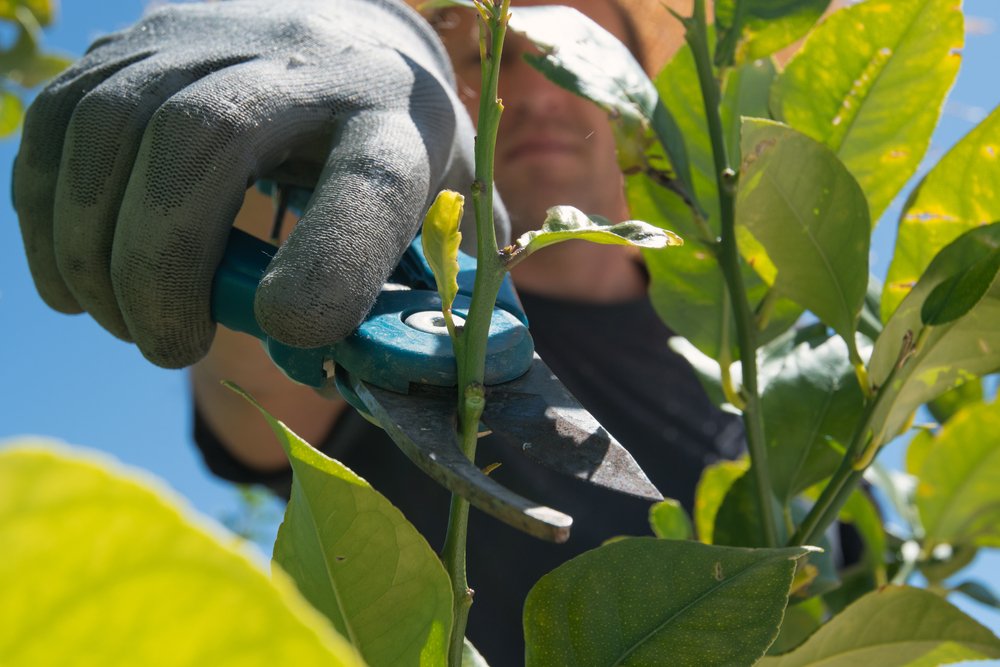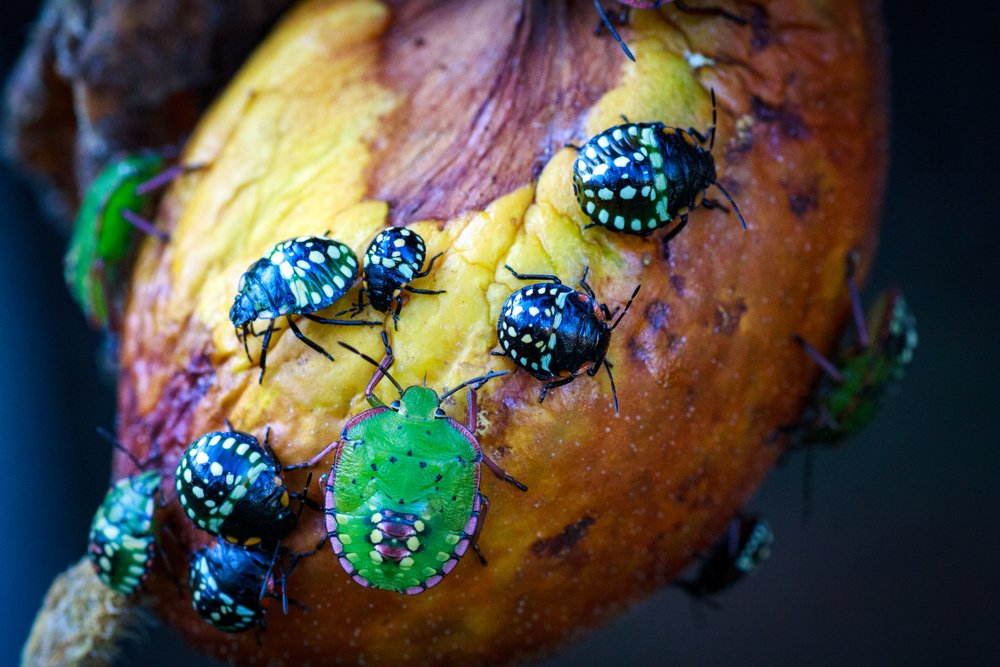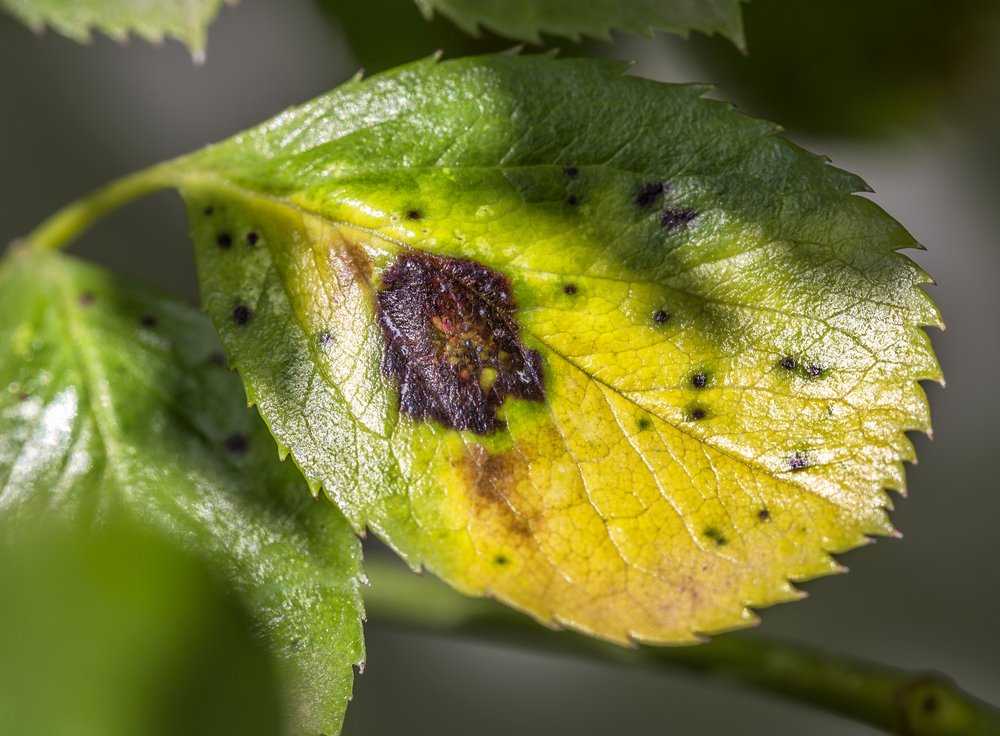Growing any kind of citrus tree in your backyard is incredibly rewarding. Not only do they look amazing, they also provide you with your own, homegrown fruit. In fact, having a lemon tree in the backyard was once part of the Australian dream. Now we have begun experimenting with limes, blood oranges and mandarins. But no matter what type of citrus tree you prefer, we all want them to keep them growing and healthy all year round. Today we are going to discuss how to keep your citrus tree growing and healthy.

Caring for Citrus Trees
We have bred citrus trees for their prolific ability to bear fruit. And it can be exciting to see freshly planted trees bear their first season of flowers and fruit. However, a young tree needs to focus its early years on increasing size as well as establishing a healthy root system. This allows the young citrus tree to anchor itself in your garden and make it more wind and drought resistant. Bearing fruit, on the other hand, causes a considerable strain on the tree’s resources, so we recommend removing this first “crop” of fruit before it can develop. this way, your tree will be hardier and more prolific in the long run.
Watering Citrus Trees
One of the basic ways of caring for your citrus tree is watering it correctly. Citrus trees need to be watered deeply and thoroughly. An occasional, deep watering is far more beneficial than frequent, light watering. As a result, we recommend a good, deep watering once a week. If you have a ground planted citrus, watering should either be from rainfall or manual watering. Ensure the area you plant in has excellent drainage before planting. If drainage is poor, your tree will get too much water.
Container planted citrus should be watered as soon as the soil dries out or is only slightly damp. And, again, drainage for the container must be excellent. Whether your tree is ground or container planted, watering for citrus should be done evenly. They should never have dry soil for more than one day.
Fertilising Citrus Trees
Like all plants and trees, citrus trees need regular fertilising to promote strong, healthy growth. This, in turn, helps to produce better fruit crops. Citrus trees are well known as heavy feeding plants, especially once they bear fruit. In late Winter or early Spring, apply a citrus tree specialised formula to soil out to the drip area. The drip area is the soil immediately under the branches of the tree or bush. You should then thoroughly water the tree after feeding.
Further, many plants absorb nutrients through their leaves faster than they do through their roots. If you need immediate results, liquid feed them over the leaves of the plants as well as the soil. This is known as foliar feeding. If you are going to foliar feed we recommend fertilising in the early morning or late afternoon to avoid leaf burn.
Follow directions on the fertiliser package carefully, especially when applying any spray to a citrus tree. It will tell you how much fertiliser you need and how to apply it. How much you apply will also be based on the size and age of the tree as well as the amount of nitrogen there is in the fertiliser. Always divide the amount by three, don’t feed it all at once. When in doubt, use a little less than recommend.
When using granular fertiliser, make sure you rake it lightly into the top inch or two of soil. Water the entire area underneath the tree before and after applying the fertiliser.
Newly planted trees don’t need fertiliser for the first year. Wait until they have been in the ground at least a year.
When to Fertilise
A mature citrus tree will need three applications of fertiliser spread throughout the year. We recommend fertilising in Winter, late Spring and late Summer. Citrus is associated with spring and summer planting.
Fertiliser Types
Using fertiliser specially formulated for citrus trees is the best, as those generally provide the macronutrients and micronutrients the trees need. You can get organic fertilisers that feature the same nutrients as well. Citrus fertilisers are available in a variety of forms. While granular is the most popular but liquid and spike versions are also available.
What are Macronutrients?
Citrus trees need nitrogen, phosphorus and potassium to grow healthy. These are what we call macronutrients or NPK. Nitrogen is the most important macronutrients for a healthy tree and a good crop.
What are Micronutrients?
In addition to macronutrients, citrus trees also need micronutrients. These are vital for tree health. These micronutrients include zinc, iron and manganese.

Bug and Pest Control to Keep Your Citrus Tree Growing
Like any living thing, plants are susceptible to diseases and pests. Citrus trees are no different.
Rot
Citrus roots rot away readily when the soil is heavy or largely clay based. Citrus bark can also decay and lift from almost any part of the tree (known as collar rot). Adding a layer of organic mulch will help introduce more air into the soil. However, the best defence against rot is to spray citrus trees with a specialised fungicide to help the tree withstand the fungal diseases that cause root and collar rot.
Citrus Scab
These are lumps and brown scabs on the skin of citrus fruits, especially lemon. This is known as Citrus Scab. You can simply remove the scabs if using the fruit, or avoid using the rind of the fruit. You can ignore the disease, though many people treat it by spraying a solution of copper oxychloride and white oil to get rid of the disease before scabs form.
Bronze Orange Bugs
Bronze orange bugs are the most common pests plaguing citrus trees. These are also known as stink bugs. You can remove them by hand or even use a vacuum cleaner (if you have a disposable bag attachment!). However, these bugs spray an irritating substance, so it might be netter to spray them with a pest oil instead.
Citrus Gall Wasp
The citrus gall wasp is also a pest that plagues citrus trees. Lumps form on the branches which are caused by the wasp. While it won’t kill the tree, it is best to remove any parts of the tree with lumps on it. We recommend pruning any galls by the end of August to control this pest.
Citrus Leafminer
The leafminer is a little insect that makes small tunnels in new leaves. You can deter them and a range of other insects (sooty mould, mealy bug, and scale) by spraying your tree fortnightl with Eco Oil from Spring until Autumn.
Pollinating your Citrus Tree
Citrus tend to bloom in Winter and often there are no insects available to pollinate. There is also the issue of indoor plants and balcony plants that might not be accessible to insects. As insects are pollinators, you need to take over this role yourself. You can use an electric pollination tool to move pollen from flower to flower on each plant. This is vital to growing fruit and a step often skipped by those new to growing citrus and fruit plants.
Pruning to Keep Your Citrus Growing
In general, citrus plants don’t need special pruning to fruit well. However, regular pruning is required to remove dead and diseased wood as well as wood affected by pests. You should also prune trees and plants to a preferred size after harvest. Don’t give the plants a “haircut” all over or you might sacrifice next year’s crop. Instead, prune back low hanging branches or branches that are rubbing against each other and causing bark damage.
You can also prune if the tree produces too heavy a crop. A heavy crop can weight branches down to the point where they break, especially after heavy rain. You can either remove some fruit to lighten the weight or cut out some of the smaller branches. A heavy crop can be avoided in the future by removing some of the young, developing fruit before it gets too big. This will then allow the tree to produce larger fruit.

Harvesting Citrus Trees
Different varieties of citrus trees share certain characteristics that make citrus harvesting a similar process. Since citrus doesn’t continue to ripen when picked, the time to harvest fruit is when it’s ripe and ready to use.
The Best Time of Year to Harvest Citrus Fruit
Most citrus varieties are ready to pick in Winter. Limes and lemons ripen periodically so they can be harvested all year round. But the best indicator of ripeness is always a taste test.
The Importance of Colour in Harvesting
A good rule of thumb is to remember that most citrus fruit isn’t ripe until it reaches its final colour, and sometimes not even then. Limes actually start to turn yellow when overripe and lemons turn yellow before they’re even fully ripe. Grapefruit and oranges are more easily tracked for ripeness by colour but in the end, flavour is the final judge.
Harvesting Citrus and the Weather
Did you know that brief cold snaps (that don’t fall to freezing temperatures, can actually drive the production of additional sugars. This creates a sweeter fruit. However, freezing weather can cause the internal liquid in citrus fruit to freeze and damage the quality of both texture and taste. Frozen citrus will not repair or recover and will begin to decay. If your fruit is ripe and a freeze is approaching, swift picking is the only response.
Harvesting Citrus Late
If you leave ripe fruit on a citrus tree this can delay future tree growth and affect the next season’s bloom. While citrus will eventually fall on its own, this fallen fruit can invite pests, fungus and even root rot. Fruit that doesn’t fall will still begin to dry out and decay, so harvesting on time is always recommended.
Harvesting the fruit you’ve grown in your own garden is a rewarding job. While it is important to be mindful of colour, let the taste of the fruit guide you to the right picking decision. Watch out for the weather and harvest your fruit before a potential freeze. And always pick fruit before it becomes overripe and falls on its own.

Troubleshooting
Sometimes citrus trees can turn sickly. Blow we are going to discuss what to look for and how to treat your citrus tree.
Yellowing Leaves
Yellowing leaves can be the sign of a number of issues. Older leaves that yellow in the centre may be an indication of a magnesium deficiency. You can treat the soil around the tree with Epsom salts/magnesium sulphate.
Leaves yellowing at the tips indicate a lack of fertiliser.
Yellowing younger leaves can be a sign of iron deficiency, lack of feeding or cold temperatures. You can feed with blood and bone, citrus food, iron chelates, and sulphur simultaneously to combat this issue.
Dropping Fruit
Strong winds during flowering or shortly after while the fruit is forming. It can also be caused by too much water or too little at flowering or while fruit is forming. To remedy this, check if the soil is too wet or put the sprinkler on twice a week to give adequate water.
Sour Oranges
Sour oranges can occur when you harvest fruit too early. It is best to leave the fruit a little longer on the tree. Insufficient sunlight can also cause sour oranges. It might be necessary to replant your tree in a sunnier position. You can also remove surrounding growth to allow more sun to reach the tree, especially in Winter.
Finally nutrient deficiency can cause sour oranges. Treat the soil around the tree with a matchbox-full of copper sulphate. If that fails try spreading a small handful of super phosphate about the root zone in Spring.
Looking to grow your own citrus tree? Excited for your first harvest? Explore Aumann’s range and supplies today to begin growing your own citrus trees!

